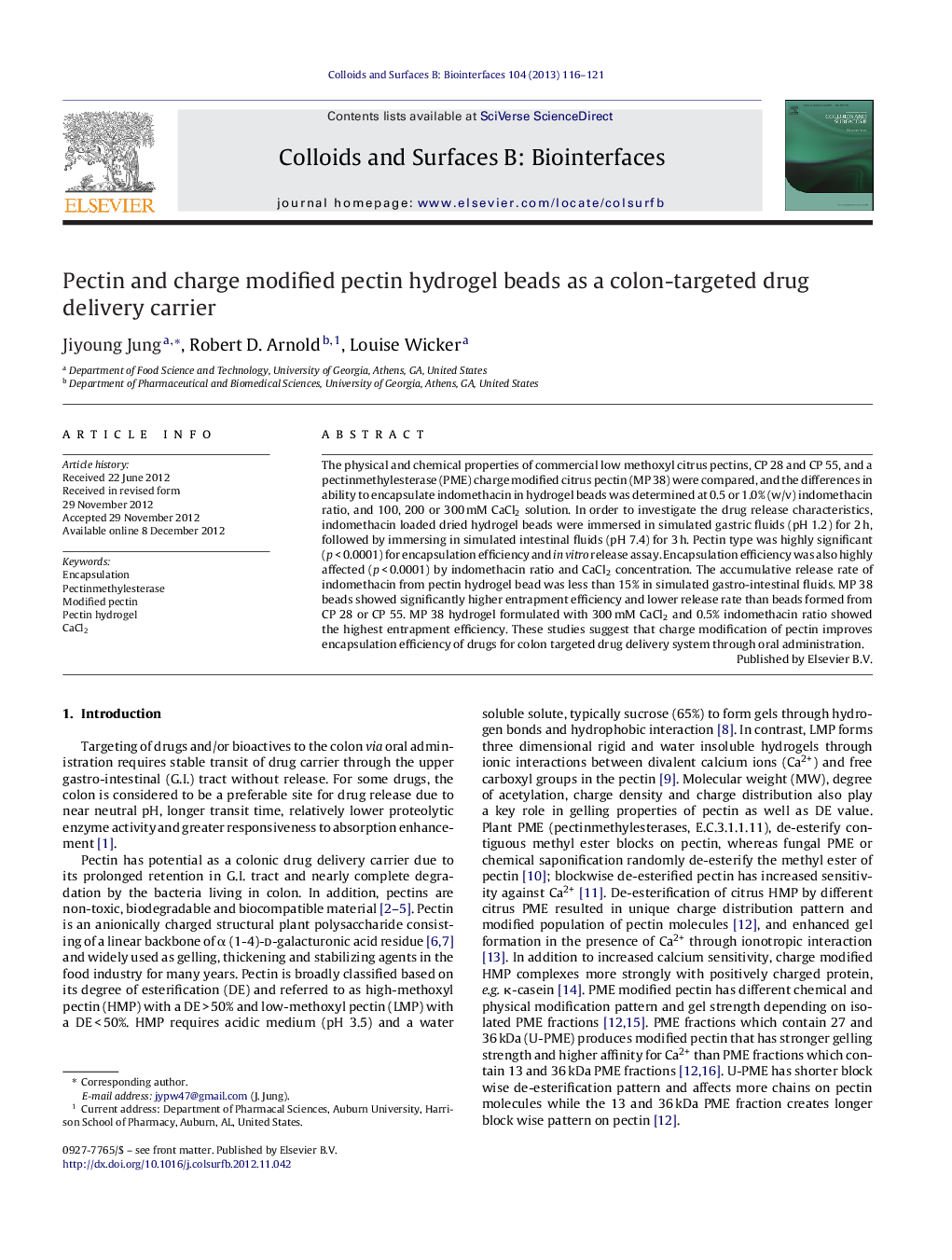| Article ID | Journal | Published Year | Pages | File Type |
|---|---|---|---|---|
| 600035 | Colloids and Surfaces B: Biointerfaces | 2013 | 6 Pages |
The physical and chemical properties of commercial low methoxyl citrus pectins, CP 28 and CP 55, and a pectinmethylesterase (PME) charge modified citrus pectin (MP 38) were compared, and the differences in ability to encapsulate indomethacin in hydrogel beads was determined at 0.5 or 1.0% (w/v) indomethacin ratio, and 100, 200 or 300 mM CaCl2 solution. In order to investigate the drug release characteristics, indomethacin loaded dried hydrogel beads were immersed in simulated gastric fluids (pH 1.2) for 2 h, followed by immersing in simulated intestinal fluids (pH 7.4) for 3 h. Pectin type was highly significant (p < 0.0001) for encapsulation efficiency and in vitro release assay. Encapsulation efficiency was also highly affected (p < 0.0001) by indomethacin ratio and CaCl2 concentration. The accumulative release rate of indomethacin from pectin hydrogel bead was less than 15% in simulated gastro-intestinal fluids. MP 38 beads showed significantly higher entrapment efficiency and lower release rate than beads formed from CP 28 or CP 55. MP 38 hydrogel formulated with 300 mM CaCl2 and 0.5% indomethacin ratio showed the highest entrapment efficiency. These studies suggest that charge modification of pectin improves encapsulation efficiency of drugs for colon targeted drug delivery system through oral administration.
Graphical abstractFigure optionsDownload full-size imageDownload as PowerPoint slideHighlights► Entrap drugs in pectin hydrogel matrix by ionotropic interaction between commercial and charge modified pectin and divalent calcium. ► In vitro drug release studied under simulated gastric and intestinal fluids. ► The most entrapment efficiency and the least drug release rate were observed with charged modified pectin beads. ► Modified pectin beads showed more dense surface morphology than commercial pectin beads.
